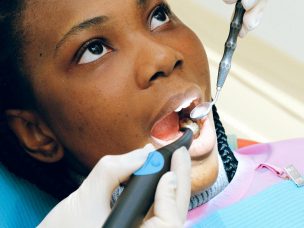Compared to standard care, ambulatory care services are more cost-effective and are associated with decreased financial burden in the long term, according to the results of a randomized controlled trial.
Hidradenitis suppurativa (HS) is described as a chronic inflammatory cutaneous disorder and is associated with substantial treatment costs. The financial implications of the disease correlate with the disease severity. The lack of adequate ambulatory services hinders early diagnosis and intervention. As a result, the disease often progresses to advanced stages before adequate care is provided.
A multicenter prospective randomized controlled trial in Germany, the EsmAiL study, assessed the treatment costs of HS in standard care in Germany and in innovative ambulatory care. The findings are published in The Journal of Dermatological Treatment.
Study Participants
The study enrolled 274 HS patients in the intervention, or ambulatory care group, and 279 HS patients in the control, or standard care group. The billing data regarding treatment-related costs was only available for 89 and 93 patients in the control and intervention groups, respectively.
Ambulatory Care and Standard Care Characteristics
Compared to patients in the control group, a lesser number of intervention group participants were administered systemic antibiotics, inpatient services, biologics, and pain medications. However, a relatively greater number of patients in the intervention group utilized topical antibiotics.
Direct Treatment Costs in Hidradenitis Suppurativa
For standard care services, the average per annum per patient cost was estimated to be €2,679.71 for the control group and €2,281.81 for the intervention group. Similarly, the costs associated with medication prescriptions were relatively lower for the intervention group. However, treatment-related costs of severe cases of HS were comparable between the two groups.
Hiadrenitis Suppurative and Cost-Utility Analysis
Over the 12-month treatment period, the decrease in the Dermatology Life Quality Index (DLQI) scores was estimated to be 6.9 ± 6.22 and 3.7 ± 6.41 points in the intervention and control groups, respectively. The intervention group participants achieved a gain of 0.145 Quality-Adjusted Life Years (QALYs), whereas control group participants achieved a gain of 0.067 QALYs.
In summary, the treatment-related costs for HS patients are proportional to the disease severity, with the major contributing factors being medications and inpatient services. Ambulatory care allows a reduction in the indirect costs of treatment as well as a relatively greater decrease in DLQI and increase in QALYs.
Source:
Heise, M., Staubach, P., Nikolakis, G., Schollenberger, L., Mauch, M., Burckhardt, M., Zamsheva, M., Strobel, A., Langer, G., Bechara, F. G., Kirschner, U., Hennig, K., Kunte, C., Goebeler, M., Podda, M., Grabbe, S., & Schultheis, M. (2023). A center-based, ambulatory care concept for hidradenitis suppurativa improves patient outcomes and is also cost-effectiveness. Journal of Dermatological Treatment, 34(1). https://doi.org/10.1080/09546634.2023.2284105










